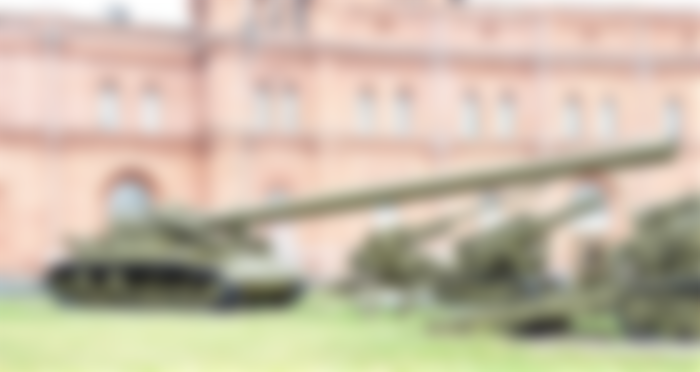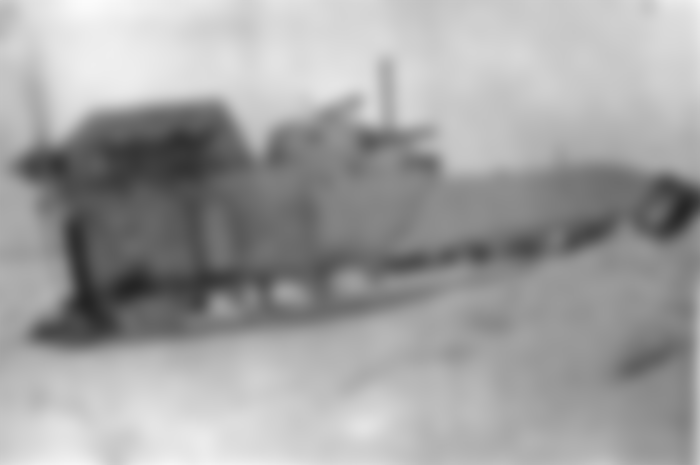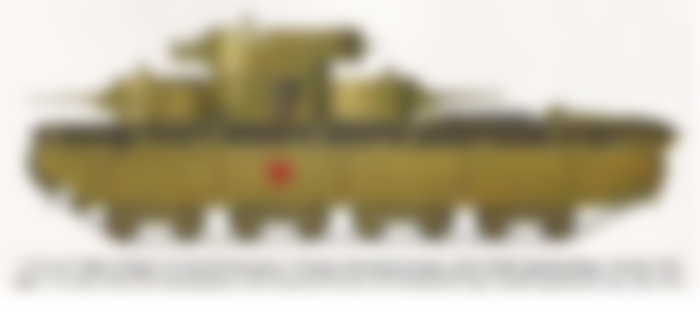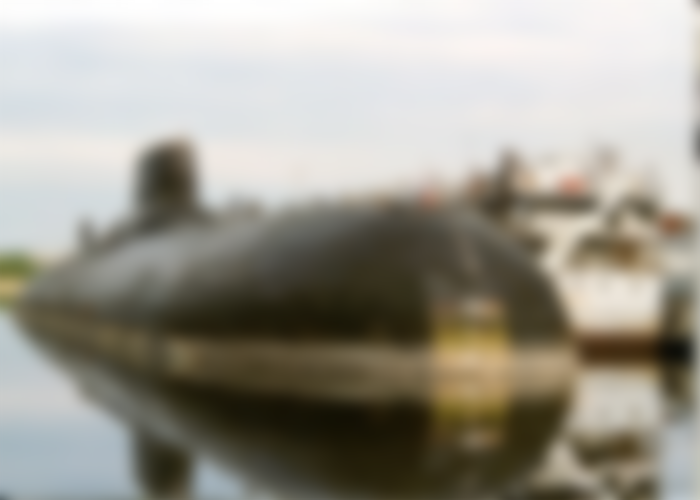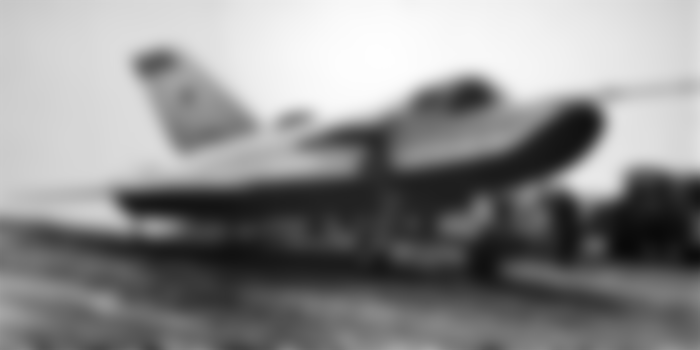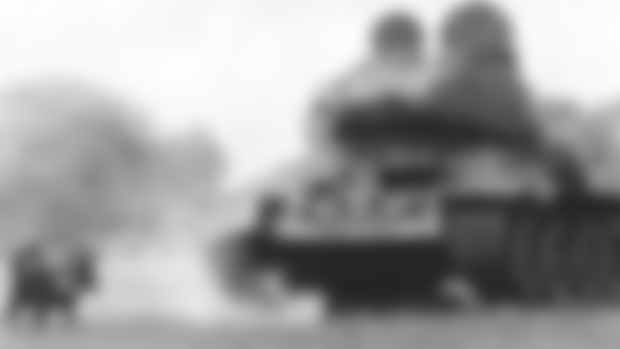soviet prototypes
Monstrous submarines, combat sleds, a gigantic underwater mole or even a cannon so big that it cannot withstand its own recoil. The former USSR, not so long ago, pursued a technological race together with the United States to the ultimate consequences. These are some of the ideas that were carried out.
We are surely not discovering anything if we say that, much to our regret, wars have ended up driving innovation in many fields. At the top of the list is undoubtedly the development of military weaponry. So today we are going to talk about the USSR and its experiments, prototypes and military weaponry during the Cold War and World War II. Many fascinating works of engineering, some hilarious, others (most of them) never even made it out of the lab, in any case, all unique.
Not so long ago the Soviet Union was a world superpower whose battlefield inventory was among the most innovative (sometimes even copying). Looking back, many of them may seem strange to us today, let's think that it was a time when the major powers put their efforts on the technological race, they sought to be or appear to be the most fearsome and if in some cases the Soviet Union did not have the resources for the development of a new enemy weapon, it did not matter, engineers were asked to be able to do it, or at least sharpen the wit to make a more economical copy.
Not all of them are here, it would be impossible, but here is a small group of these inventions with which the USSR tried to conquer this race. A walk and tour through the battle inventory of a power:
1: 2B1 Oka Cannon

What we see here was part of the pride of the Soviet Union, perhaps today a bit "excessive". It is a nuclear cannon built in 1957, artillery that was a milestone, as it is one of the largest pieces ever built with 20 meters long and a nuclear warhead that could be sent 45 kilometers away.
The problem: such was the force of the recoil on each shot that the tanks were left for the "scrap heap." Oka's failure marked a shift in Soviet development away from large based artillery pieces and projectile to focus on guided missile development.
2: The underwater (super) "mole".

The project was never completed and lasted for decades. At the beginning, the idea was to develop a submarine warship based on the principle of operation of the tunnel shield. After passing through several stages, in 1949 the USSR commissioned a large group of scientists to develop the machinery... and it was again paralyzed in favor of the development of nuclear weapons.
Finally, in 1964, the first prototype was built. A cylinder-shaped boat (also called submarine mole) made of titanium with a diameter of no less than 3 meters and a length of 25 meters equipped with an atomic engine. The bow and stern would have a pointed shape and inside it, in addition to five crew members, could hold a ton of armament. In the tests carried out, it would reach speeds of up to 15 km/h and travel 15 kilometers. A second test produced a fatal explosion underground, killing the entire crew. End of the project.
3: Aerosani, the tank sleds
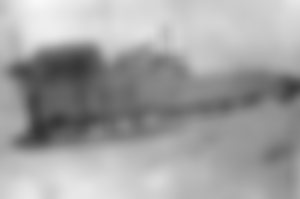
We would never have imagined it, but among the variety of vehicles designed to fight the enemy (and snowfalls) during World War II, the Soviet Union designed several different models of sled tanks. Basically it was a two-man vehicle with some cannons and a car or truck engine mounted on the rear, which allowed it to be driven by propellers. It was a vehicle suitable for places where there are long periods of snow and ice. As a curiosity, the average speed was 25-30 km/h.
Object 279 (Объект 279) the mega tank

This beast we are looking at was no less than 11 meters long including the cannon, 3.4 meters wide and 2.6 meters high. It was a prototype built by the Russian army in 1957 and the idea was to serve as a mobile command post for artillery commanders in the event of a new world war. This tank had a particularity of the disk shape of its armor which in theory increased its resistance to projectiles and gave it an advantage due to its elevated design since it could be placed behind a hill or ledge protecting the tracks, its weakest point, which had 4 tracks per axle.
Bartini Beriev VVA-14

It is a vertical take-off amphibious aircraft project that was designed by the Italian Bartini Beriev for the Russians in the 1970s. The idea behind it was to build an anti-submarine capable of identifying and destroying the US Navy. The final result and after several prototypes did not work.
None of them was able to perform a vertical take-off, mainly due to lack of engine availability, so the project was stopped after 107 test flights. Today and after several decades, the only remaining VVA-14 is in the Air Force Museum in Monino, although in a very deteriorated state.
APS, the underwater assault rifle

Here is an individual weapon that looks like something out of a James Bond movie. It is the APS underwater rifle, or also called underwater assault rifle designed by the Soviet Union in the 1970s. We could say that it is a derivative of the AK-47, and its function had its own special significance.
The idea was that since underwater bullets could not be used in a melee because they are more inaccurate and have a short range, the APS would be the solution. An aquatic rifle firing steel darts of 5.66 mm caliber and a length of 120 mm. APS would be equipped with a load of 26 cartridges and each projectile would be able to maintain its trajectory due to hydrodynamic effects, i.e., out of the water it would be inaccurate and would not exceed 50 meters.
A rifle that was the main weapon of the Soviet military divers until 1980 when its use was discontinued and replaced by the ASM-DT rifle.
T-35, the super heavy tank

Here we have another Soviet engineering work that follows the 2B1 gun. In this case it is the T-35, also known as the heavy tank, a nickname that would ultimately mark the beginning and end of its existence. It is a development that took place in the run-up to World War II, a time in history when the powers invested in a whole new range of combat systems, including a super heavy tank.
Few ended up daring to produce them. Of all the concepts, the one that had the greatest viability was the T-35, itself based on a British design adapted by Russian engineers. Its hallmark would be the unique and exclusive appearance of five turrets with which it could fire in all directions. The problem, due to its weight it was excessively slow with a top speed of 30 km/h (very slow by wartime standards). In addition, in the final design the military did not change excessively well.
KM, the monster of the Caspian Sea

We are dealing with an ekranoplane, something like an airplane, with the difference that it practically does not leave the influence of the ground effect, that is, at a few meters of altitude, flying on a cushion of air like a hovercraft. The best known of all was the KM in 1966.
The name "Caspian Sea monsters" is given by the Western intelligence services, unable to know for sure that it was an akranoplane. The KM was an aircraft of no less than 544 tons, 106 meters long and 42 meters wingspan. It could reach a top speed of 400 km/h thanks to its ten engines that lifted it more than 30 centimeters above the water. The problem was that if it exceeded 3 meters, control was lost. The KM was officially lost in an accident after a gust of wind destabilized it. After the fall of the USSR, funds for its construction were withdrawn.
Project 941 "Akula"

A milestone, yet another one to give to Russian engineers, was the construction of the world's largest submarine, also known as Akula (or Typhoon) towards the end of the Cold War, just before the dissolution of the Soviet Union. As on other occasions, the idea was to match the U.S. submarine Ohio with the intention of carrying as many missiles as possible.
It so happened that the Soviet missiles were larger, which is why Akula and its design was enlarged resulting in a "monster" of 175 meters long and 23 meters wide, or in other words, it was the equivalent of five submarines of the time together. The submarine never saw combat.
MiG-105, the Russian space plane

Long before we first heard the name of companies like Virgin Galactic, the Russians already had in mind the idea of developing space planes. Not only that, in the Cold War both the US and the USSR had experiments in mind to militarize space. While the United States had the X-20 Dyna-Soar, the Soviet response was the MiG-105 (also called Spiral), starting a program for its development in 1965. This was a space shuttle project with the idea that the device would carry out missions of photographic reconnaissance, radar, orbital interception and space-to-ground attack by missiles from space (at low orbit).
In the end, after many design and concept twists and turns, it all came down to numbers. The space plane was too expensive and the top brass felt it would offer too little concession of strategic advantage. The program would end in 1969 and revived in the mid-1970s and finally abandoned in favor of the Buran shuttle design.
Sukhoi T-4, the supersonic bomber
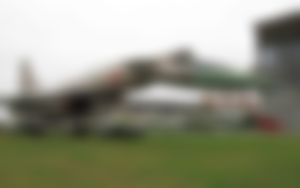
This was a time in history (early 1960s) when nations were investing in large heavy bomber aircraft. The Sukhoi, also known as the Sotka, was a project (which also passed the prototype stage) for the construction of a supersonic bomber and high-speed reconnaissance aircraft.
With this development the Soviet Union intended to match the US parallel project with the Xb-70 Valkyrie. The life of the Sotka was short, 10 flights were made and it is believed to have reached Mach 1.3 at an altitude of 12,000 meters (the aircraft was designed to reach speeds of up to Mach 3). Eventually the program was cancelled and never went into series production. The reason, it was argued, was that the aircraft was too focused on high speed, too far ahead of its time.
Mine dogs

Within the Soviet military machine during World War II were the anti-tank dogs (also known as mine dogs). These were dogs with explosives attached to their backs that were trained to search for food under armored vehicles or German tanks after having left them without food for several days. Once the dog was under the vehicle, the charge was detonated.
In the end, this measure was not entirely satisfactory for the army. The dogs, once released, had learned to run away in search of food in some enemy vehicle, although most of the time they were lost in the battlefield and ended up returning to the Russian army itself, or they fled terrified by the noise of the vehicles or ended up under the vehicles of the allied side.
